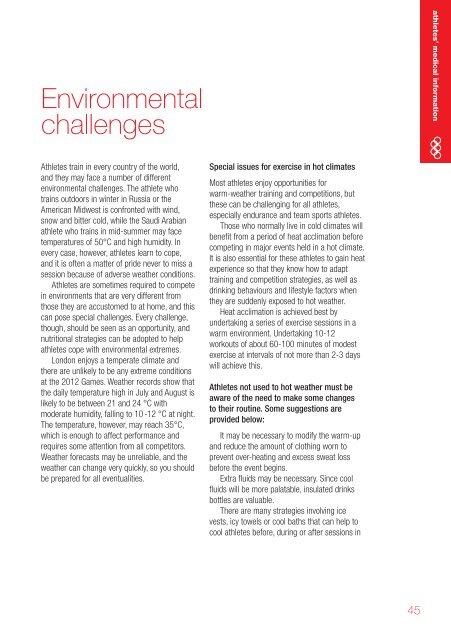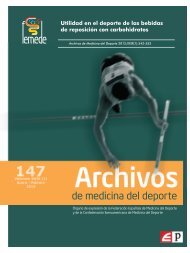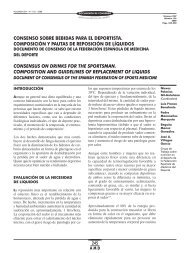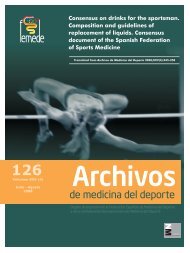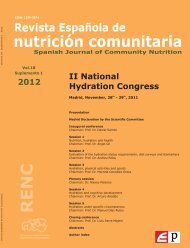Nutrition for Athletes - Coca-Cola
Nutrition for Athletes - Coca-Cola
Nutrition for Athletes - Coca-Cola
You also want an ePaper? Increase the reach of your titles
YUMPU automatically turns print PDFs into web optimized ePapers that Google loves.
Environmental<br />
challenges<br />
athletes’ medical in<strong>for</strong>mation<br />
<strong>Athletes</strong> train in every country of the world,<br />
and they may face a number of different<br />
environmental challenges. The athlete who<br />
trains outdoors in winter in Russia or the<br />
American Midwest is confronted with wind,<br />
snow and bitter cold, while the Saudi Arabian<br />
athlete who trains in mid-summer may face<br />
temperatures of 50°C and high humidity. In<br />
every case, however, athletes learn to cope,<br />
and it is often a matter of pride never to miss a<br />
session because of adverse weather conditions.<br />
<strong>Athletes</strong> are sometimes required to compete<br />
in environments that are very different from<br />
those they are accustomed to at home, and this<br />
can pose special challenges. Every challenge,<br />
though, should be seen as an opportunity, and<br />
nutritional strategies can be adopted to help<br />
athletes cope with environmental extremes.<br />
London enjoys a temperate climate and<br />
there are unlikely to be any extreme conditions<br />
at the 2012 Games. Weather records show that<br />
the daily temperature high in July and August is<br />
likely to be between 21 and 24 °C with<br />
moderate humidity, falling to 10 -12 °C at night.<br />
The temperature, however, may reach 35°C,<br />
which is enough to affect per<strong>for</strong>mance and<br />
requires some attention from all competitors.<br />
Weather <strong>for</strong>ecasts may be unreliable, and the<br />
weather can change very quickly, so you should<br />
be prepared <strong>for</strong> all eventualities.<br />
Special issues <strong>for</strong> exercise in hot climates<br />
Most athletes enjoy opportunities <strong>for</strong><br />
warm-weather training and competitions, but<br />
these can be challenging <strong>for</strong> all athletes,<br />
especially endurance and team sports athletes.<br />
Those who normally live in cold climates will<br />
benefit from a period of heat acclimation be<strong>for</strong>e<br />
competing in major events held in a hot climate.<br />
It is also essential <strong>for</strong> these athletes to gain heat<br />
experience so that they know how to adapt<br />
training and competition strategies, as well as<br />
drinking behaviours and lifestyle factors when<br />
they are suddenly exposed to hot weather.<br />
Heat acclimation is achieved best by<br />
undertaking a series of exercise sessions in a<br />
warm environment. Undertaking 10-12<br />
workouts of about 60-100 minutes of modest<br />
exercise at intervals of not more than 2-3 days<br />
will achieve this.<br />
<strong>Athletes</strong> not used to hot weather must be<br />
aware of the need to make some changes<br />
to their routine. Some suggestions are<br />
provided below:<br />
It may be necessary to modify the warm-up<br />
and reduce the amount of clothing worn to<br />
prevent over-heating and excess sweat loss<br />
be<strong>for</strong>e the event begins.<br />
Extra fluids may be necessary. Since cool<br />
fluids will be more palatable, insulated drinks<br />
bottles are valuable.<br />
There are many strategies involving ice<br />
vests, icy towels or cool baths that can help to<br />
cool athletes be<strong>for</strong>e, during or after sessions in<br />
45


